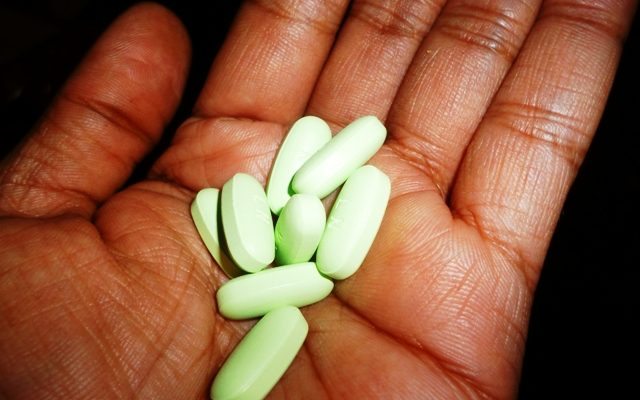 Image courtesy of [Iqbal Osman via Flickr]
Image courtesy of [Iqbal Osman via Flickr]
Health & Science
Are We Doing Enough to Prevent Antibiotic Resistance?
Petri dishes do far more than indicate if you have strep throat. They were a key prop in the theater of antibiotic discovery. A mere glance in a petri dish ushered in the antibiotic revolution.
On a bright and sunny (just a guess) day in 1928, Alexander Fleming puzzled over what he saw in a petri dish of Staphylococcus bacteria. One small, moldy area of the dish had somehow dodged the enterprising colonization of the bacteria. Fleming speculated this was not a coincidence. He wondered if the mold, Penicillium Notatum, was somehow inhibiting bacterial growth. He experimented some more and eventually published his findings in the British Journal of Experimental Pathology. Fleming’s brick wall had been isolating the penicillin from the mold to use as a drug. Luckily his research eventually ended up in the hands of two scientists at Oxford who were ready to take up the challenge.
Penicillin — the first antibiotic — was used to treat a human patient in 1941. We’ve probably all taken them, but what are they really? Antibiotics are microorganisms (and now synthesized drugs) that attack the bacteria that cause infection in your body. Just as bacteria couldn’t grow on the moldy part of Fleming’s petri dish, bacteria cannot grow in a body on antibiotics.
World War II soldiers were among the first to benefit from penicillin before it was released to the general public in the late 1940s. Newspapers hailed it as a miracle drug.
The potential downside of this miracle drug had not evaded the experts, however. Alexander Fleming himself warned of microbes developing penicillin resistance in his acceptance speech for the Nobel Prize in Physiology or Medicine in 1945.
Miracles Happen
Antibiotics thwarted some of the leading causes of death in human existence. Childbirth, ear infections, and even simple skin scrapes were often deadly before these saviors entered the fray. Many children didn’t see their first birthdays, succumbing to infections we don’t think twice about today. Having surgery in the early 1900s? Just kiss your family goodbye before you go under the knife.
Antibiotics are microorganisms ideally adapted to kill other microorganisms while causing little or no harm to the host. The word “antibiotic” actually means “against life.”
Scientists design synthetic versions of these antibiotic microorganisms so we may have a profusion of drug options. About 150 million prescriptions are written for antibiotics every year.
And that’s a problem because…?
Antibiotics may be miraculous, but bacteria are not taking the challenge lying down. They’re fighting back by developing mechanisms to resist antibiotics. Don’t take it personally, it’s what any organism would do for the sake of survival. It turns out that bacteria are marvelous adaptors. Two million people in the United States suffer from antibiotic-resistant infections every year and many die as a consequence. Additionally, the CDC estimates a cool $20 billion in resulting economic burdens.
In short, our arsenal of antibiotics is losing efficacy. If this continues unchecked, we risk being thrust back into the dark ages of medicine when common ailments put many a healthy body six feet under. Antibiotic resistance is also detrimental to treatments for more serious illnesses. Therapies for cancer and organ transplants are often complicated with infection. Doctors rely heavily on antibiotics to keep their patients’ strained bodies free of infection. If antibiotics become ineffective, these life-saving treatments might be relegated to the past. It would mark one monumental step back in health care.
If you’re not scared yet…
Everyone loves a good villain to embody their fears. Emerging “superbugs” epitomize scary. When antibiotics were new, development was explosive. New drugs essentially kept microbes on their toes and resistance was less prolific. Invention of new drugs has now stagnated enough that bacterial evolution threatens to overtake our developmental countermeasures.
Welcome to the world of superbugs, aka resistant germs. These include nightmares like:
Carbapenem‐resistant Enterobacteri‐aceae (CRE): Literally nicknamed “nightmare bacteria.” It’s resistant to nearly all antibiotics and kills about half of the people infected by it.
Staphylococcus aureus (MRSA): MRSA usually manifests as a skin infection. Because of its resistant capabilities, it can wreak havoc by spreading through medical facilities.
These monsters aren’t made up, they’re frighteningly real and we may soon lose our ability to fight them.
Let’s Get “Sciencey”
Microbes are tricky little beasts. They will always evolve to develop resistance to what threatens them. The more bacteria are exposed to antibiotics (which we just learned is quite frequently), the more chances they have to develop resistance. When bacteria are exposed to antibiotics, susceptible strains die, leaving zero competition for the resistant ones so they are free to survive and flourish. Scientists call this selective pressure.
Resistant bacteria get that way by acquiring resistance genes through genetic mutation or getting the resistance from another bacterium. They can even get multiple resistant traits and end up developing resistance to multiple families of antibiotics.
Watch the video below for a perfect explanation of how this happens.
Why is this happening?
- They’re over-prescribed: Antibiotics are some of the most commonly prescribed drugs used in medicine. For example, the first Ebola patient in the United States was sent home on antibiotics before doctors knew what he had. Antibiotics won’t do anything for Ebola or even the sinus infection they believed he had. Most sinus infections are viral so antibiotics don’t do anything — unless it was 1 out of the 100 cases where the sinus infection is caused by bacteria.
- They’re mis-prescribed: Physicians often have to use incomplete or imperfect information. They prescribe antibiotics as a an all-purpose band-aid.
- They’re used heavily: The chance of bacteria developing resistance increases with antibiotic use. Unfortunately, doctors must rely heavily on antibiotics to reduce risk of infection in critically ill patients. Furthermore, close proximity among sick patients in hospitals creates an ideal environment for resistant germs to spread.
- They’re used in agriculture: Agriculture use accounts for half of the antibiotics produced in the United States. Scientists agree that adding antibiotics to feed is a key problem in developing antibiotic resistance. Agriculturally, antibiotics are used to promote animal growth and proactively prevent infections in addition to just treating sick animals.
Who is going to save us?
The CDC released a report on the threat of antibiotic resistance in 2013. It was the first exhaustive compilation of the health threats antibiotic resistance presents. If you’re not up to reading the whole 100 pages, here is a snapshot of the strategies they recommend to save us all from antibiotic resistance:
- Prevent infections from happening in the first place: No infection, no antibiotics, and consequently less risk that resistance develops.
- Track antibiotic resistance: Tracking will shed light on the specific mechanisms of resistance development. With this knowledge, intervention strategies will be more informed and more effective.
- Change the way antibiotics are used: Antibiotics are generally overused. Up to 50 percent of antibiotic prescriptions are unnecessary. Physicians can take up the mantle of antibiotic stewardship by using antibiotics only when necessary.
- Develop drugs and diagnostic tests: Bacteria develop antibiotic resistance as they evolve — it’s a natural process resulting from biological pressure. Introduction of new drugs will slow down this natural evolution. Diagnostic tests will allow us to understand and track the evolution in a more timely way.
Hey…did we budget for all of this?
Federal spending to combat antimicrobial* resistance has been limited. In 2014, the budget was $450 million. That figure sounds grand, but it amounts to just about $1.04 per American. On the other hand, antibiotic resistance costs the United States an estimated $55-70 billion each year.
A little bit lopsided, don’t you think?
*Antimicrobial resistance includes antibiotic resistance but also refers to resistance of other microbes like parasites and viruses. Antibiotic resistance refers specifically to bacteria that cause infection. Most strategies cover the more comprehensive antimicrobial resistance.
Making plans…
The Obama Administration announced a game plan in September for facing antimicrobial resistance. Here’s the to-do list:
- Leverage findings from the President’s Council of Advisors on Science and Technology (PCAST) report on combating antimicrobial resistance. The report suggests doubling the current federal investments from $450 million to $900 million a year. It also outlines recommendations for strong federal leadership, effective surveillance, research, clinical trials, increasing economic incentives for development, increasing stewardship for current antibiotic use, limiting agricultural use of antibiotics, and increasing international coordination.
- Implement the National Strategy for Combating Antibiotic Resistant Bacteria. The PCAST report was used to create a National Strategy for Combating Antibiotic Resistant Bacteria. The strategy focuses on five major goals:
Slow the development of resistant bacteria and prevent the spread of resistant infections; strengthen national one-health surveillance efforts to combat resistance; advance development and use of rapid and innovative diagnostic tests for identification and characterization of resistant bacteria; accelerate basic and applied research and development for new antibiotics, other therapeutics, and vaccines; and improve international collaboration and capacities for antibiotic resistance prevention, surveillance, control, and antibiotic research and development.
- Form a task force that combats antibiotic resistant bacteria. Established by Executive Order, the task force is responsible for implementing the National Strategy for Combating Antibiotic Resistant Bacteria. It is working on a detailed report of specific action plans due in February 2015.
- Finance diagnostic innovation. A $20 million prize, co-sponsored by the National Institutes of Health and the Biomedical Advanced Research and Development Authority, will be granted for a point-of-care diagnostic test that identifies antibacterial-resistant infections.
A little legal setback…
The July ruling in the NRDC v. US FDA case was marked as a major setback in the fight against antimicrobial resistance. The plaintiffs (including the Natural Resources Defense Council and Center for Science in the Public Interest) were dismayed that the court ruled against compelling the FDA to ban the use of antibiotics in healthy animals used for food.
The case overturned two other district court rulings that would have required the FDA to rescind approved use of antibiotics for purposes other than to treat sick animals. Companies could have gotten around the ruling if they proved the drug in question posed little risk for contributing to the development of antimicrobial resistance in humans.
Some other hangups
There are a few other pesky issues that might hinder some of the strategies for reducing antimicrobial resistance:
- Individual privacy could potentially get in the way of optimal surveillance of antibiotic resistance. The Health Insurance Portability and Accountability Act of 1996 (HIPAA) guarantees privacy of health information that is individually identifiable. Patient preferences could determine what information can be used to track antimicrobial resistance.
- Companies lack incentives to create new antibiotics because the traditional sales volume and price linkage is missing. Because fighting antibiotic resistance forbids overusing one particular drug, companies would probably not get a good return on investment.
- Ponderous approval processes for new drugs might also hinder the speed of new antibiotic drug development. A balance will need to be struck in ensuring speed of innovation without compromising safety.
So the government has antimicrobial resistance under control?
It has a robust plan for taking action against antibiotic resistance, but being an informed patient never hurt anybody. The CDC recommends a few steps you can take, including abstaining from antibiotic use for viral infections, not saving leftover antibiotics, and not taking antibiotics prescribed for someone else.
The fight against antimicrobial resistance is really no fight at all, but a call for permanent change in our medical and agricultural systems. As long bacteria exist and want to survive, our desire to survive must be stronger.
Resources
Primary
CDC: Antibiotic Resistance Threats in the United States, 2013
Additional
Cochrane Summaries: Antibiotics for Acute Maxillary Sinusitis
Food Safety News: White House Calls for Action Plan to Address Antibiotic Resistance
The White House: New Executive Actions to Combat Antibiotic Resistance and Protect Public Health
CDC: Untreatable: Today’s Drug Resistant Health Threats
Explorable.com: History of Antibiotics
American Chemical Society: Discovery and Development of Penicillin
National Institute of Allergy and Infectious Diseases: Antimicrobial Drug Resistance
World Health Organzation: Antimicrobial Resistance
Huffington Post: Feds Failing to Act on Antibiotic Resistance Despite Grave Threat
Natural Resources Defense Council: Food, Farm Animals and Drugs
CDC: Legal Issues Associated with Antimicrobial Drug Resistance
CDC: White House Announces National Strategy for Combating Antibiotic Resistance








Comments